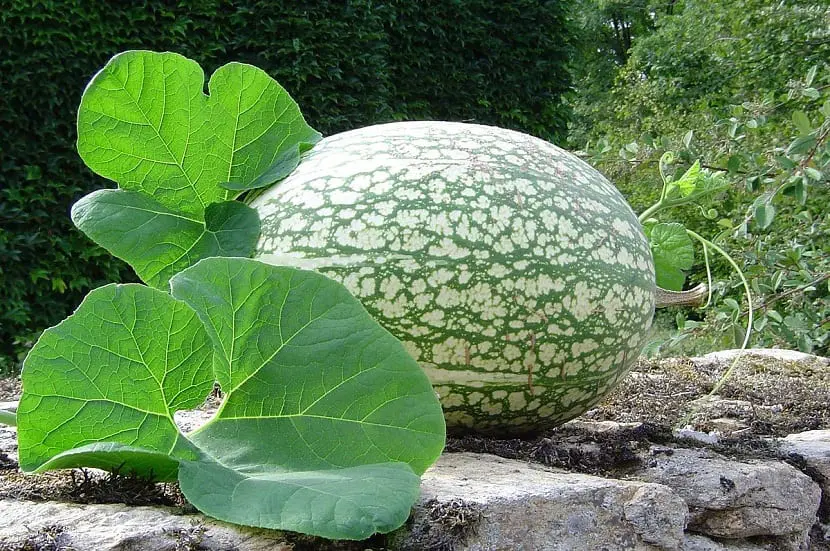Cucurbits are fruits very widespread throughout the world and there are many varieties. You will find the pumpkin, watermelon, cucumbers and melons, all belonging to this family of creepers whose fruits are characterized by having abundant water, potassium, beta-carotene and micro vitamins.
Once winter is beginning to wind down it is time to plan planting for May and citron squash stands out as an excellent choice for those who have space in the garden. Once grown, you can enjoy the delicious alcayota or angel hair squash to make traditional preserves and jams loaded with fiber and antioxidants.
From

La Cucurbita ficifolia Popularly known as citron squash, it is a climbing vine that produces the characteristic summer fruit with which the traditional angel hair is prepared. Like watermelons, melons and cucumbers, citron gourd belongs to the cucurbit line.
Although it came to Europe in the late sixteenth and early seventeenth centuries, it is known that it comes from America. This crop occurs especially in the Andean mountainsFrom there it spread throughout the Americas and is currently cultivated on almost all continents.
The citron squash is one of the least cultivated of the cucurbit species and although it is quite well known today, in the past it was even more precious. Archaeological discoveries have been made that point to its consumption and marketing especially in the Peruvian region.
Among melon and cucumber, citron squash is the one that is grown in the least amount, but in more places. Namely, It is the most universal of the family of cucurbites. The extension it covers is very varied, since it goes from Chile and Argentina to the United States. India, the Philippines and Japan are heavy producers.
Characteristics of citron gourd
Like all cucurbits, citron squash It is a climbing, creeping plant with thick roots, perennial and resistant.
The leaves have petioles of five to 25 centimeters, although some have white pigment spots and the flowers are axillary and pentameric in location. It has male and female flowers, the latter with robust pendulums up to five centimeters long. The ovary is shaped like an ellipse and the flowers of the plant are usually yellow.
The citron squash fruit is large and green in color with light and dark tones, it also has white, green and cream spots. Inside is the white pulp and sweet flavor rich in fiber.
The seeds measure from 12 to 15 millimeters, being these of dark brown or black colors of ovoid shape, each fruit has between 300 and 500 units.
Cultivation and care
To sow citron squash, the climate must be considered very specifically. Because it comes from hot areas and although it resists the cold very well, the ideal is to grow them where there is plenty of sun. They should be watered frequently since their fruit is composed mostly of water.
For those who live in cold and temperate areas, the ideal time to sow is at the beginning of May, never below 12 ° C, otherwise resort to a greenhouse. In warm places the ideal is to sow it outdoors, especially at the end of May and when there is no risk of freezing temperatures.

As a this plant needs a lot of space, you should leave about two meters between plants.
Once the seedlings are born from the seedbed, you must choose the most beautiful one to replant in the chosen field. These will grow very large, so regular pruning should be done.
The fruit will be ready in six months for September and October and to know that it is ripe it must be pressed with the nail, which must easily penetrate the shell.
Plagues and diseases
Although pests do not usually attack these types of crops, they must take basic care.
The fungi that can most frequently attack citron squash are the mildew and powdery mildew. It also has risks of attacks of Mites, caterpillars, aphid and spider mite, but all can be avoided with extracts of garlic and horsetail.
It is recommended to sow some plants associated with the pumpkin to avoid pests and enrich the soil such as tomatoes, cabbage, corn chard and lettuce.

